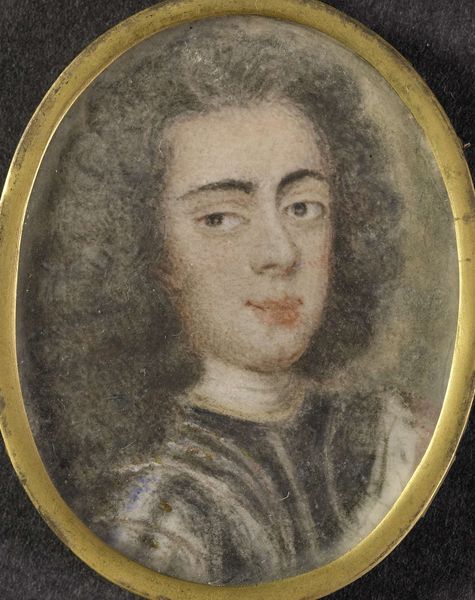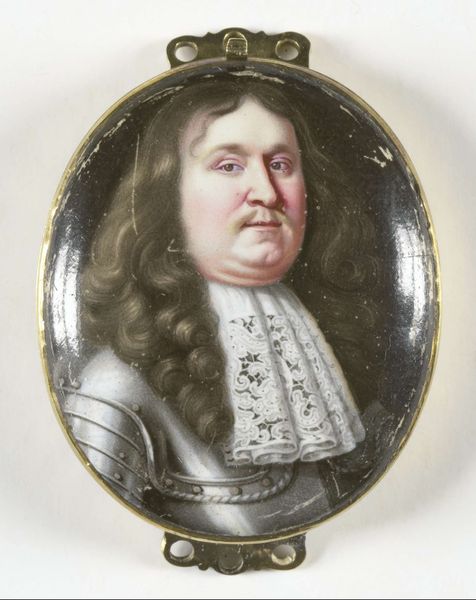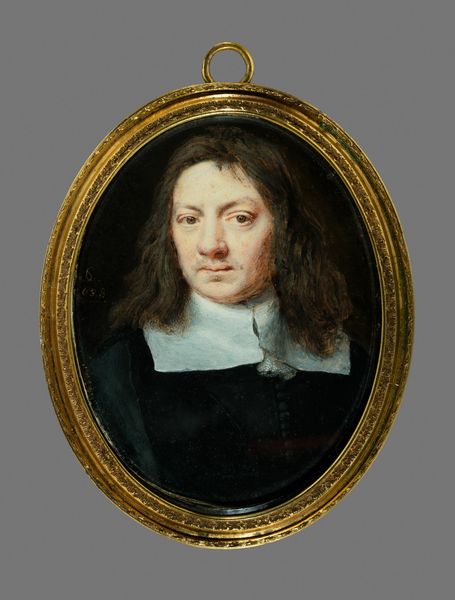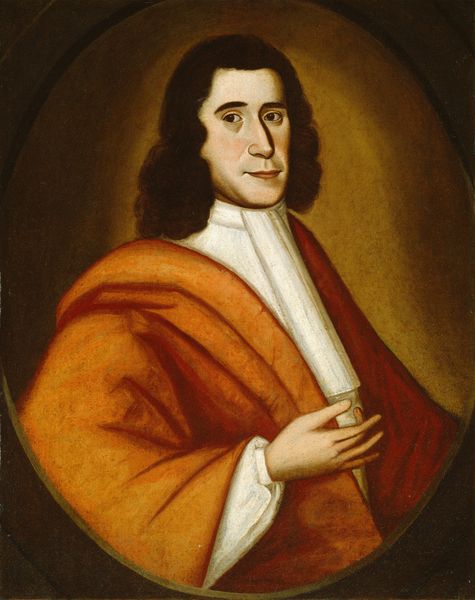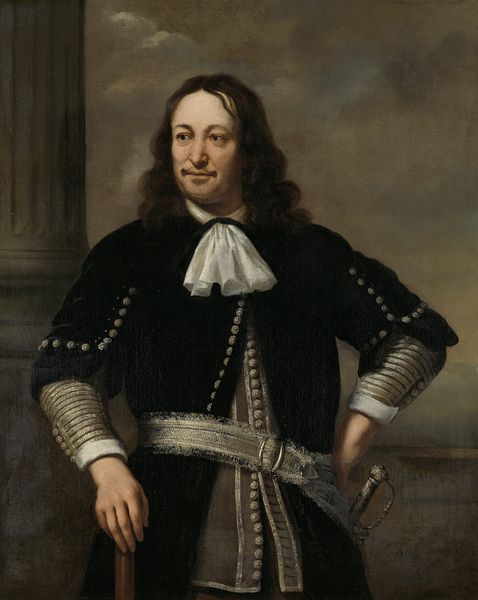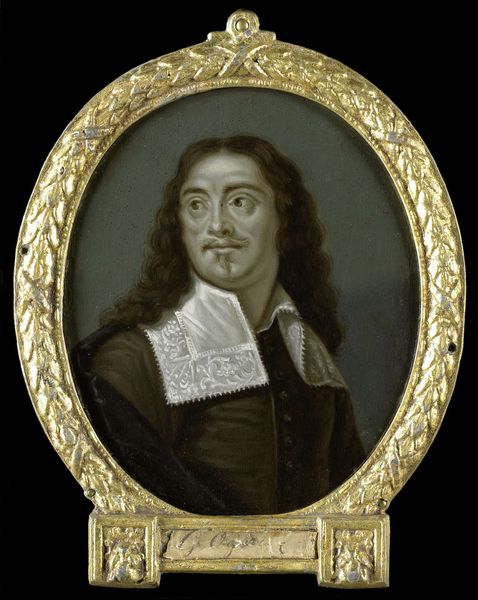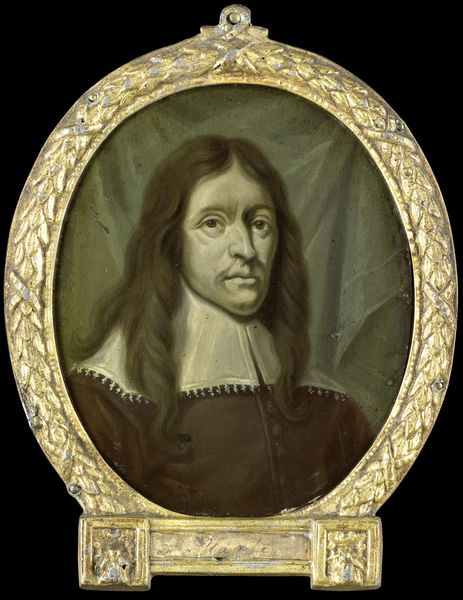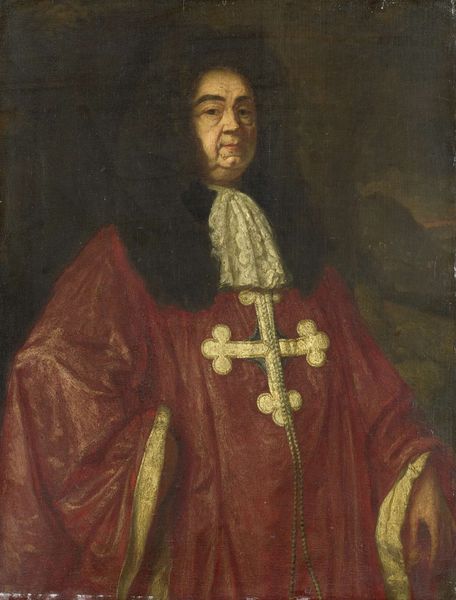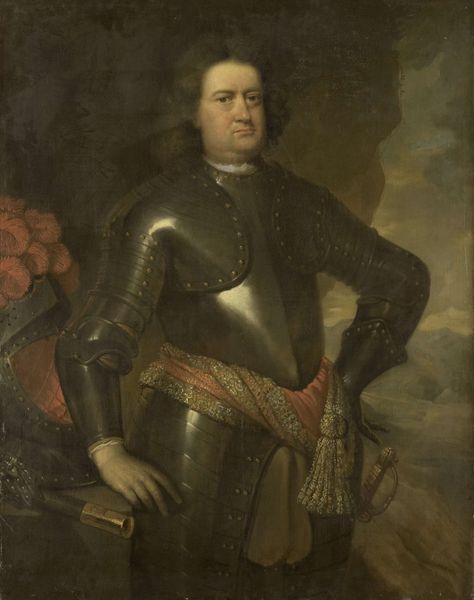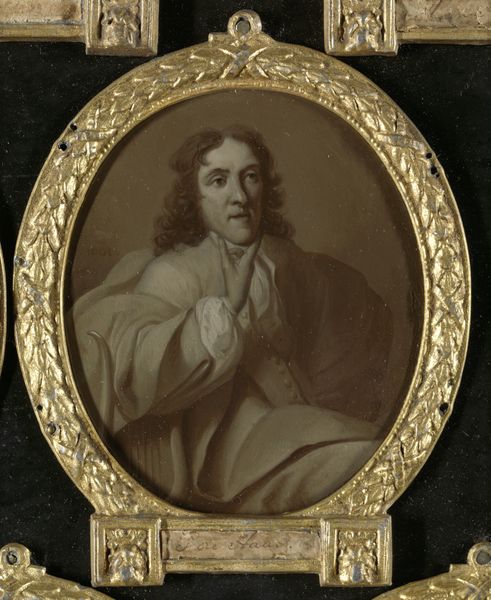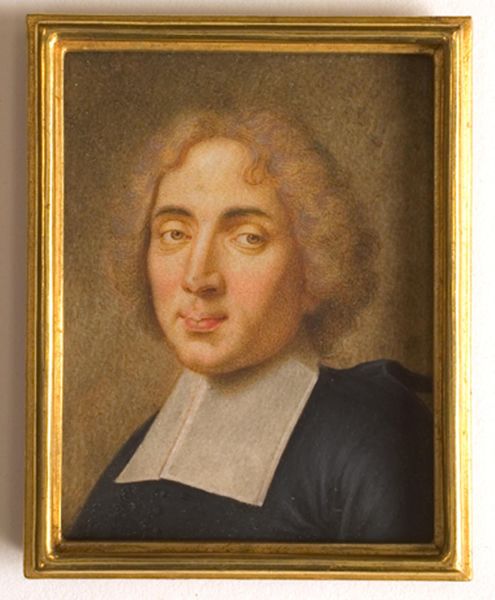
painting, oil-paint
#
portrait
#
baroque
#
painting
#
oil-paint
#
history-painting
#
realism
Copyright: Public domain
Curator: Here we have a portrait by Claudio Coello, titled "Juan Francisco De La Cerda, Viii Duque De Medinaceli". It's an oil painting done in the Baroque style. Editor: It strikes me as heavy...all that dark fabric, like a shroud. I wonder about the weight of the materials; that's a lot of oil paint, likely many layers. And think about the clothing he's wearing—the labor needed to create and maintain those garments...it speaks volumes. Curator: Yes, and observe how the dark palette lends to a somber, almost mournful quality. In Baroque portraiture, this heaviness, as you put it, can signify gravity and status, especially for someone holding high rank, as the Duke did. The somber mood amplifies the symbolic significance. The almost exaggerated shadows seem to envelop him, giving him a somewhat world-weary aura. Editor: Exactly! It's not just paint on canvas, it's the physical manifestation of power. The darker colors hide the weaves of fabric and obscure forms; the rich textures both reveal and conceal something about his status and perhaps character, suggesting the deliberate concealment of wealth, labor, and, therefore, extraction. I see something both deliberate and unnerving here. Curator: He almost blends with the darkness. His pale face becomes the focal point, and his eyes hold an introspective quality. Think about the symbolism behind commissioning such a piece; it solidifies lineage and projects a certain image of power and permanence to those who view it. It speaks to lasting family identity. Editor: But the real story lies in how such portraits were produced and disseminated, impacting public perception. Who was employed to mix the paints? Who prepped the canvases, sewed the costumes, sat in vigil, touched the many, many objects portrayed on this canvas? Who purchased it, consumed it, displayed it, cared for it? To see such material objects displayed prominently shows us much more about the system and class in play at the time than it reveals about any singular man. Curator: That's a great point, highlighting art’s production conditions in general and how we can appreciate a richer understanding of artistic interpretation. Editor: Indeed! Viewing art through the lens of material culture opens up entirely new perspectives. Thanks.
Comments
No comments
Be the first to comment and join the conversation on the ultimate creative platform.
